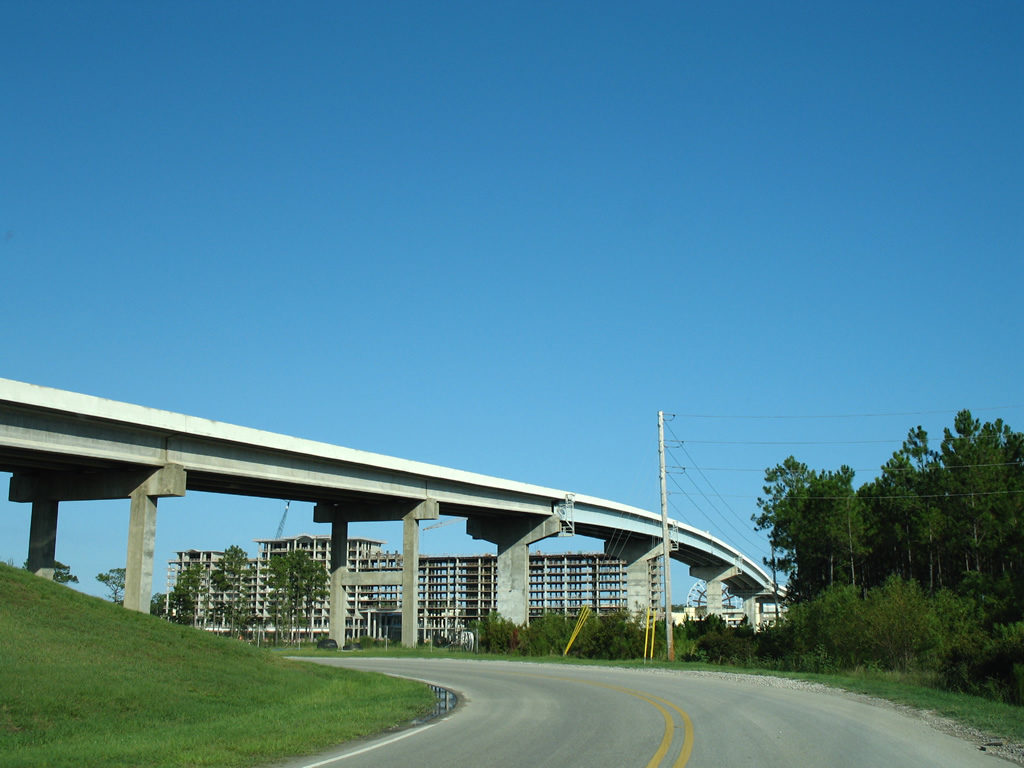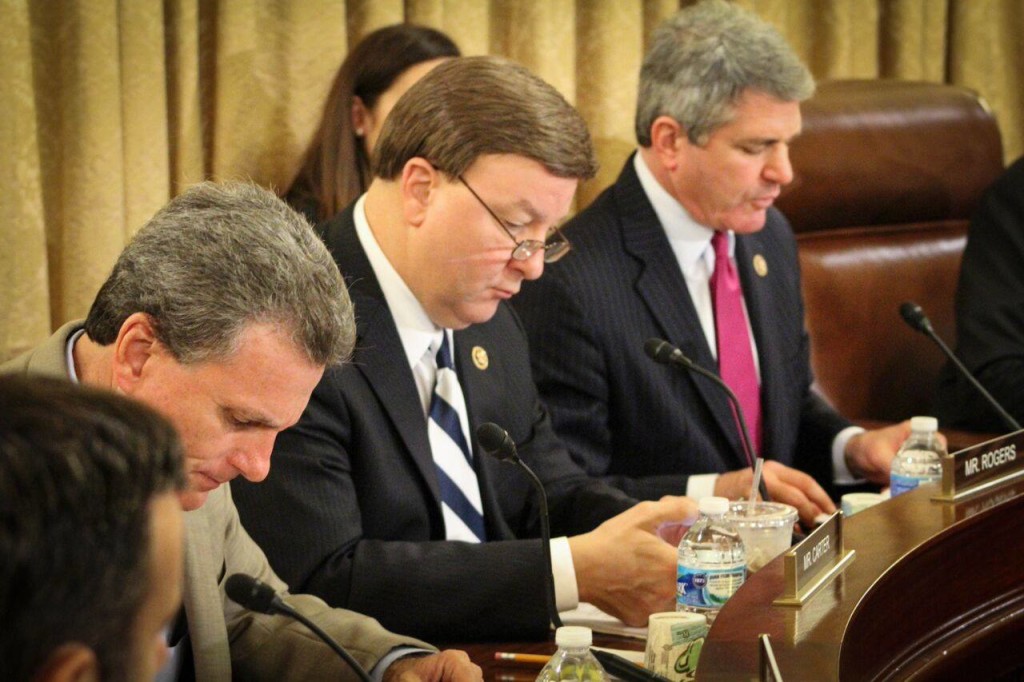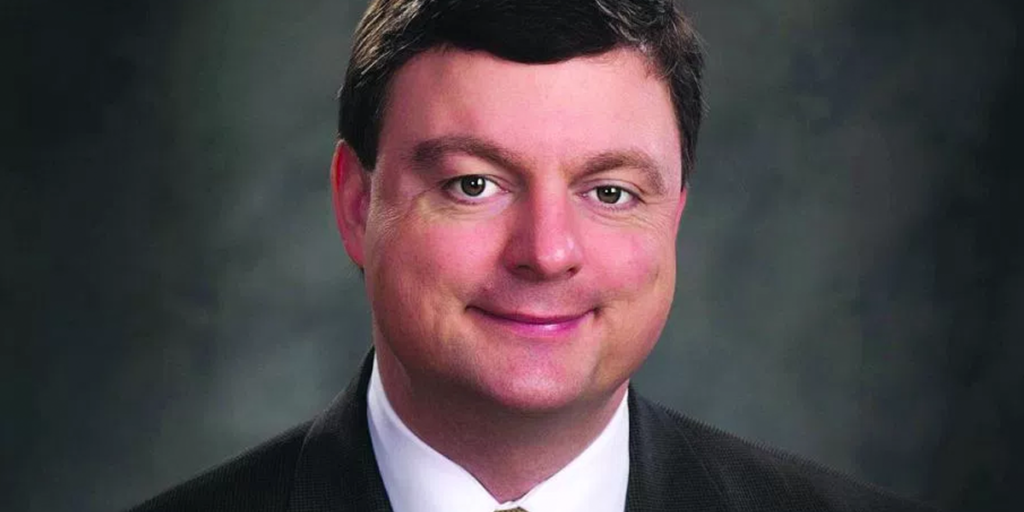The key to Alabama’s economic future: Infrastructure investments

Sometimes the best way to look at the future is to study the past. In Alabama, we know that after Thomas Jefferson completed the Louisiana Purchase, he immediately authorized infrastructure to connect the new lands with the east. From Postal roads to ports and railroads, Alabama grew and prospered with each new infrastructure project. Today, if Alabama is going to remain competitive — make no mistake, other states are actively reducing burdensome regulations and facilitating new infrastructure projects to continue to attract jobs and investment — then Alabama has to get to work. One thing history has shown us is that when the good people of Alabama roll up their sleeves and get to work, we can compete and we can compete and win in a global market. Today our state needs to focus on several new and critical infrastructure projects that require our attention This is a nationwide issue of critical importance; the United States has an estimated $5.2 trillion (with a T) backlog of unmet infrastructure needs. It’s not a matter of if we need new infrastructure investment, but how we do it most efficiently without saddling taxpayers with massive costs. Many of these answers lie in the public-private partnership model, in which the government partners with private businesses to build, operate and maintain critical infrastructure. It’s a model that recognizes the efficiencies and speed with which the private sector can get things done, while meeting and delivering all requirements for the state and federal governments. Projects that languish in underfunded bureaucracies can come to life when these public-private partnerships are used. And most importantly, the dollars necessary to fund critical transportation projects come from the private sector, not the taxpayer. Alabama is seeing a boom along its southern coast, with cities like Orange Beach and Gulf Shores experiencing massive tourism-fueled growth. This is great news for the region and for our state as a whole, but with growth comes congestion. Until a privately owned toll bridge was constructed, visitors and locals only had one way to cross the Intracoastal Waterway to get to the Gulf: the I-59 bridge. But that private toll bridge, the Beach Express, gives visitors an option to avoid the congestion of I-59 and pay a small toll for the right to cross quickly. The Beach Express has roughly one-tenth of the traffic seen on I-59. That isn’t just good news for commuters, but taxpayers across Alabama as well. No public money has gone toward the construction, operation or maintenance of the Beach Express. And because a private company owns the asset, there is a profit motive that ensures they will do everything they can to attract more drivers. We saw this with a recent announcement that American Roads, the owner of the Beach Express, is voluntarily lowering tolls for drivers while simultaneously investing its own money in widening the bridge to improve traffic flow. Today, in Washington, D.C., there is a renewed vigor to rebuild America starting with its infrastructure. There are a number of federal programs that specifically focus on public-private partnerships. The Beach Express is a great example of how these partnerships should work. Sitting in traffic wastes your time, wastes fuel, and hurts everyone. With access to funding, the private operators can get the expansion moving–and get you moving–much faster then the traditional government model. Alabama has a lot to be proud of, but we also have a lot of work to do to remain competitive and to improve our quality of life. We can start by recognizing the limitations of the traditional government run infrastructure projects and overcome those limitations by using the more efficient public-private partnership model in cases where it makes sense to do so. The Beach Express expansion is a perfect example where this can come into to play and the people of Alabama, and the citizens of Mobile, will be far better for it.
Congressman Mike Rogers plays critical role in U.S. missile defense, national security

As North Korean missiles soar over the Pacific, Hawaii lawmakers are preparing for a possible nuclear attack by North Korea on the U.S. state. Many Americans across the country believe policymakers in Washington have an obligation to fund systems that can protect Americans here and now. One such lawmaker who plays a key role in Congress’ missile defense decision-making is Alabama 3rd District. U.S. Rep. Mike Rogers. As a senior member of the House Armed Services Committee (HASC), Rogers was selected to serve as Chairman of the Subcommittee on Strategic Forces, which is specifically tasked with dealing with missile defense and nuclear weapons issues. With tensions over North Korea’s weapons systems escalating in recent months — as North Korean dictator Kim Jung Un and his regime have launched tests of multiple intercontinental ballistic missiles (ICBM), some of which could reach North America — Rogers’ job in Congress in more important than ever. Especially given that North Korea recently threatened the U.S., saying it should be “beaten to death like a rabid dog” and reduced to “ashes and darkness.” Hawaii’s leaders are relying on the U.S. missile defense system, whose interceptors are based in California and Alaska, for defense. But as missile tests continue and threats from Pyongyang feel ever more viable, the question is — are America’s missile defense systems enough to defend the Aloha State? The United States? The top U.S. commander in the Pacific theater, Adm. Harry Harris Jr., told lawmakers on Capitol Hill in April Hawaii may not be protected from the North Korean nuclear missile threat. That America needed more radars and more interceptors in the Pacific explaining that the current system could be “overwhelmed” by an ICBM attack. Congress heeded the Admiral’s advice in the 2018 National Defense Authorization Act (NDAA) and passed several measures to bolster Hawaiian missile defense including the Homeland Discrimination Radar Hawaii (HDR-HI), but the billion dollar project could take near a decade to fully develop. Nevertheless, some experts believe it’s too little for a short-term threat of an attack by North Korea. Steve Bucci, a visiting fellow at the Heritage Foundation, said just that. “I’d love to say we have six months, a year, five years, to build in the improvements and then that would be more than adequate, but that’s just not the truth right now,” Bucci told the Washington Free Beacon (WFB). “We have no idea when Kim Jong Un is going to shoot a missile at Hawaii. Rogers agrees. In August, he sent a letter to President Donald Trump asking him to support the additional missile defense funding in the National Defense Authorization Act (NDAA) saying North Korea’s ICBM tests “present an increased threat to our homeland, regional stability, and the 28,500 American service members and their families deployed to the Korean Peninsula.” “This proposed funding would enhance reliability and discrimination capabilities for homeland missile defense by developing space-based sensors for discrimination and increasing the number of ground-based interceptors necessary for spares and tests, increase funding for missile defense technology research, and increase procurement of THAAD and Patriot interceptors,” Rogers explained in the letter. The NDAA is being completed now and should land on President Trump’s desk for signature soon. It remains to be seen if there is any additional funding provided for the protection of Hawaii beyond the long-term radar project.
Pell City High students denied LGBTQ homecoming float

A float for the Pell City High School homecoming parade representing the lesbian, bisexual, gay, transgender, and questioning (LGBTQ) student population was denied according to two students. 16-year-old junior Brianna Phillips and 15-year-old sophomore Haley Youngblood are now accusing the school district of discriminating against their sexual orientation. The girls claim they filled out the necessary form to submit a float for the upcoming Oct. 27 homecoming game, got 110 signatures from their peers for the non-academic float, and presented them to the principal to approve the float. Principal Tony Dowdy denied their request saying it failed to meet the necessary guidelines for a school float. Pell City School District superintendent, Dr. Michael Barber, has since weighed in and agrees with Dowdy. “The Pell City High School homecoming parade participation approval process was in existence prior to this event,” said Barber. “Those participating in the parade must follow the existing guidelines and gain prior approval. Those participating in the parade must represent existing clubs and organizations that represent the academic curriculum of Pell City High School.” But Phillips and Youngblood aren’t giving up. They’ve created a change.org petition and are hopeful Gov. Kay Ivey will weigh in with her support.
Cherokee County Probate Judge/Commission Chairman Kirk Day dies at 46

Cherokee County Probate Judge and County Commission Chairman J. Kirk Day died Wednesday at the age of 46. Day reportedly suffered a heart attack on Oct. 5 at his home and was taken to Cherokee Medical Center. Ultimately he was transported to the Redmond Regional Medical Center in Rome, Ga. where colleagues said he remained in critical, but stable, condition until he passed away Wednesday afternoon. Cherokee County Commission called Day “a thoughtful, hardworking man who cared deeply for Cherokee County and its citizens,” in a statement. “To him, each day was another opportunity to make a difference in someone’s life. He will be missed by all. Our thoughts and prayers are with his family during this difficult time,” the statement continued. Day was a 1989 graduate of Cherokee County High School in Centre, Ala. He went on to graduate from the United States Military Academy, West Point in 1993, after which he served nine years as an officer in the United States Army, upon which he returned to Centre, Ala. In 2004, former-Gov. Bob Riley appointed Kirk to be Probate Judge of Cherokee County to complete an unexpired term. He was elected to the position again in 2012 and served in that capacity until death. Funeral arrangements are pending for Day. Alabama Supreme Court Justice Lyn Stuart on Wednesday commissioned Cherokee County District Judge Wes Mobley to serve as “special probate judge” until Day’s vacancy can be filled by Gov. Kay Ivey.
Donald Trump says Puerto Rico can’t get hurricane aid ‘forever’

President Donald Trump lashed out at hurricane-devastated Puerto Rico on Thursday, insisting that federal help will be limited and blaming the U.S. territory for its financial struggles. The broadside came as the House headed toward passage of a $36.5 billion disaster aid package, including assistance for Puerto Rico. Puerto Rico has been reeling since Hurricane Maria struck three weeks ago, leaving death and destruction in an unparalleled humanitarian crisis. Forty-five deaths in Puerto Rico have been blamed on Maria, 90 percent of the island is still without power and the government says it hopes to have electricity restored completely by March. Trump tweeted: “We cannot keep FEMA, the Military & the First Responders, who have been amazing (under the most difficult circumstances) in P.R. forever!” In a series of tweets, the president said “electric and all infrastructure was disaster before hurricanes.” He blamed Puerto Rico for its looming financial crisis and “a total lack of accountability.” Democrats said Trump’s attacks were “shameful,” given that the 3 million-plus U.S. citizens on Puerto Rico are confronting the kind of hardships that would draw howls of outrage if they affected a state. One-third of the island lacks clean running water and just 8 percent of its roads are passable, according to government statistics. “It is shameful that President Trump is threatening to abandon these Americans when they most need the federal government’s help,” said Maryland Rep. Steny Hoyer, the second-ranking House Democrat. The legislative aid package totals $36.5 billion and sticks close to a White House request. For now, it ignores huge demands from the powerful Florida and Texas delegations, which together pressed for some $40 billion more. A steady series of disasters could put 2017 on track to rival Hurricane Katrina and other 2005 storms as the most costly set of disasters ever. Katrina required about $110 billion in emergency appropriations. The bill combines $18.7 billion for the Federal Emergency Management Agency with $16 billion to permit the financially troubled federal flood insurance program pay an influx of Harvey-related claims. An additional $577 million would pay for western firefighting efforts. Up to $5 billion of the FEMA money could be used to help local governments remain functional as they endure unsustainable cash shortfalls in the aftermath of Maria, which has choked off revenues and strained resources. House Speaker Paul Ryan, R-Wis., planned to visit Puerto Rico on Friday. He has promised that the island will get what it needs. “It’s not easy when you’re used to live in an American way of life, and then somebody tell you that you’re going to be without power for six or eight months,” said Resident Commissioner Jenniffer Gonzalez-Colon, who represents Puerto Rico as a nonvoting member of Congress. “It’s not easy when you are continue to suffer – see the suffering of the people without food, without water, and actually living in a humanitarian crisis.” The GOP-run Congress had protracted debates last year on modest requests by former President Barack Obama to combat the Zika virus and help Flint, Michigan, repair its lead-tainted water system. Now, it is moving quickly to take care of this year’s crises, quickly passing a $15.3 billion measure last month and signaling that another installment is coming next month. Several lawmakers from hurricane-hit states said a third interim aid request is anticipated shortly – with a final, huge hurricane recovery and rebuilding package likely to be acted upon by the end of the year. Republished with permission from the Associated Press.
Twinkle Andress Cavanaugh: ‘Strong start, strong finish’ is vital to Alabama’s future

As I travel around our great state listening to thousands of Alabamians talk about the things near and dear to their hearts, I am filled with hope. Alabama is a wonderful state with so much potential. We have smart, hardworking, God-fearing people, and we can do anything when we put our minds to it. A brighter Alabama is on the horizon. But we need to invest now in order to secure a better future. There is a multitude of steps we need to take, including fixing our run-down roads and bridges, maintaining our navigable waterways, and bringing broadband to all areas of our state, but we cannot achieve anything without drastic improvements in education. For far too long, Alabama has ranked nearly last in the country in education. Our children are our most valuable resources, and they deserve nothing less than the absolute best. It is well past time that we turn things around and compete for number one instead of settling for forty-eighth. We need an educational renaissance in our state. We must ensure that our children are equipped with a top-notch education so that they can compete in a modern, global economy and prepare them to secure good, high-paying jobs. This summer, Governor Kay Ivey announced a major step on our road to educational excellence in Alabama. The new policy initiative, ‘Strong Start, Strong Finish,’ focuses on three key phases of education: 1) early childhood, 2) computer science in middle school and high school, and 3) workforce preparedness. I fully support this important new initiative and will do everything I can to help ‘Strong Start, Strong Finish’ flourish. It all begins with the period from pre-K through third grade. We cannot allow students to fall behind in this early phase of education, because these formative years are vital layers of foundation for everything to follow. We must ensure every child in Alabama has a solid base that allows for seamless development and learning; the goal is that one year’s learning will be reinforced and built upon in the next year until our children are properly prepared to fill a job of their choice. As a state, we must continue to expand our First Class Pre-K program and strive for reading proficiency levels that lead the nation in this early stage of education. A strong start is integral to everything that follows. The next stage, ‘CS for AL,’ focuses on a cohesive, statewide expansion of computer science education. Today, our state has over 4,600 computer science jobs available, and this sector is poised to grow significantly in the coming decade. These jobs have a high average annual salary of $82,000, but Alabama is not preparing a workforce to meet the industry’s needs. A unified emphasis on computer science and STEM education will help recruit new businesses, lower unemployment, and equip our children with the skills to compete in a modern economy. By 2020, 62% of available jobs in Alabama will require some type of post-secondary education. I like to call this the “13th grade.” Whether it is a certificate, credential, 2-year college degree, or a 4-year degree, our children will need the 13th grade to compete for quality, high-paying jobs. Right now, only 37% of our workforce meets this criterion. This is nowhere near good enough, so focusing on a strong finish to our children’s education is much-needed for not only our families but Alabama’s economy, too. For some of our students, that means a college degree from one of our world-class colleges or universities, but for many it means getting a technical certification or job training. Workforce development programs, technical schools, public-private partnerships, and dual enrollment programs with local community colleges will prepare our children for good, high-paying jobs and make Alabama an attractive place to start or grow a business. The bottom line is that each child should be equipped for and allowed to choose his or her own path to success. I am proud of the work that Governor Ivey is doing for our state. But it is going to take a strong team-effort to keep Alabama surging forward to brighter days. I firmly believe education is the key to our future and will pay large dividends down the road. Let’s all get behind ‘Strong Start, Strong Finish’ and ignite an educational renaissance right here in Alabama. ••• The above is the opinion of Twinkle Andress Cavanaugh, the President of the Alabama Public Service Commission. Opinions expressed do not represent the position of the Public Service Commission or its other commissioners.
Study reveals best Alabama cities to get a mortgage

Considering buying a house in the Yellowhammer State? A new study on local mortgage markets ranked the best cities across the state to buy a home. SmartAsset, a financial technology company, recently released its third annual study on the “Best Places to Get a Mortgage.” The study determined the top markets to secure a home loan in the state by analyzing data on mortgage approval rates, in addition to mortgage interest rates, average five-year borrowing costs and property taxes. The company based the overall borrowing costs by examining the expected costs over the first five years of a $200,000 mortgage with a 20% down payment, including closing costs. Here are Alabama’s top cities to get a mortgage:


